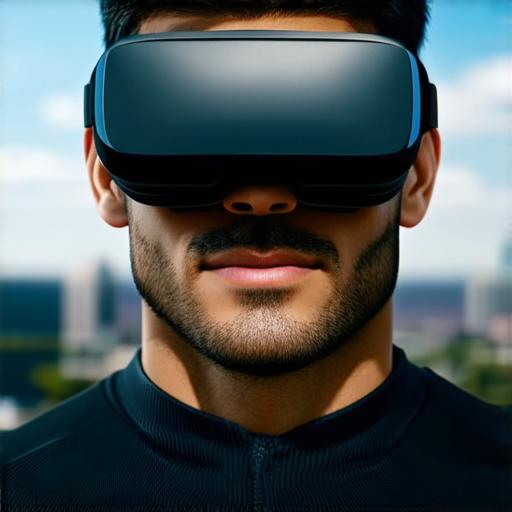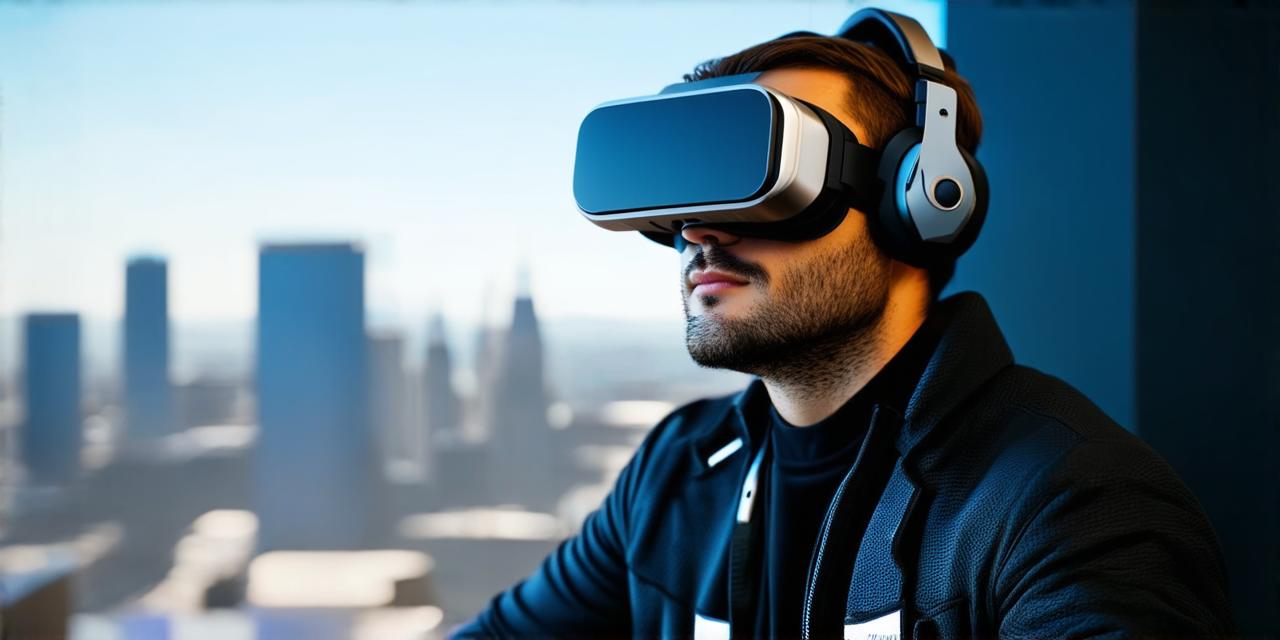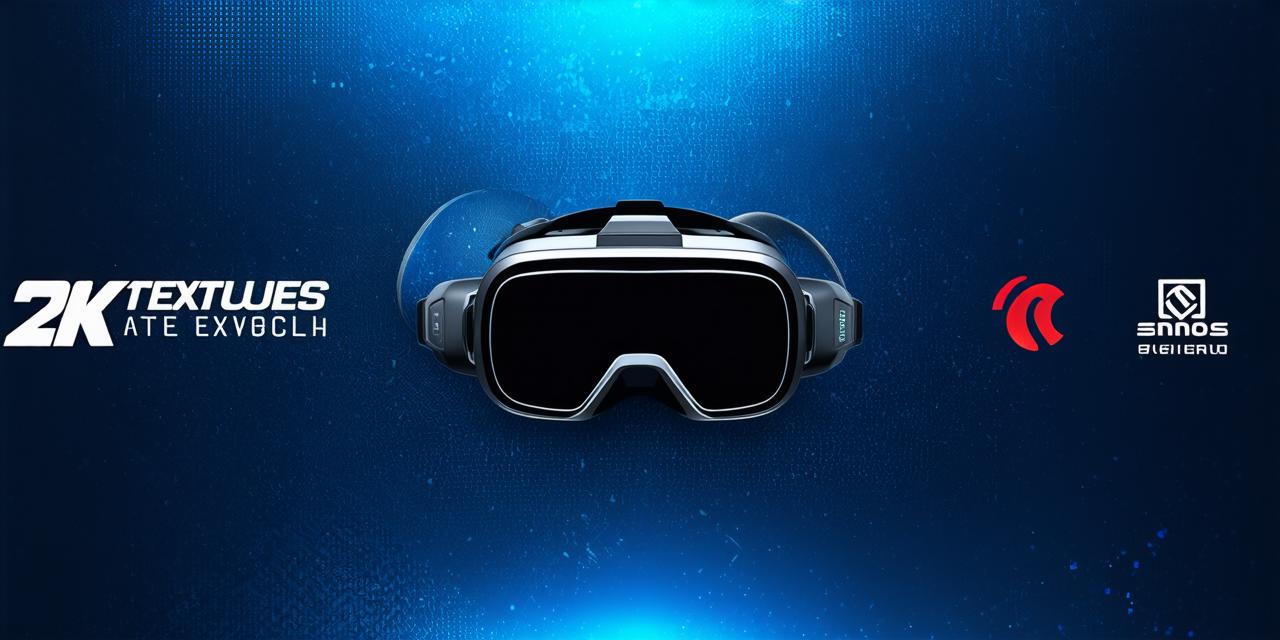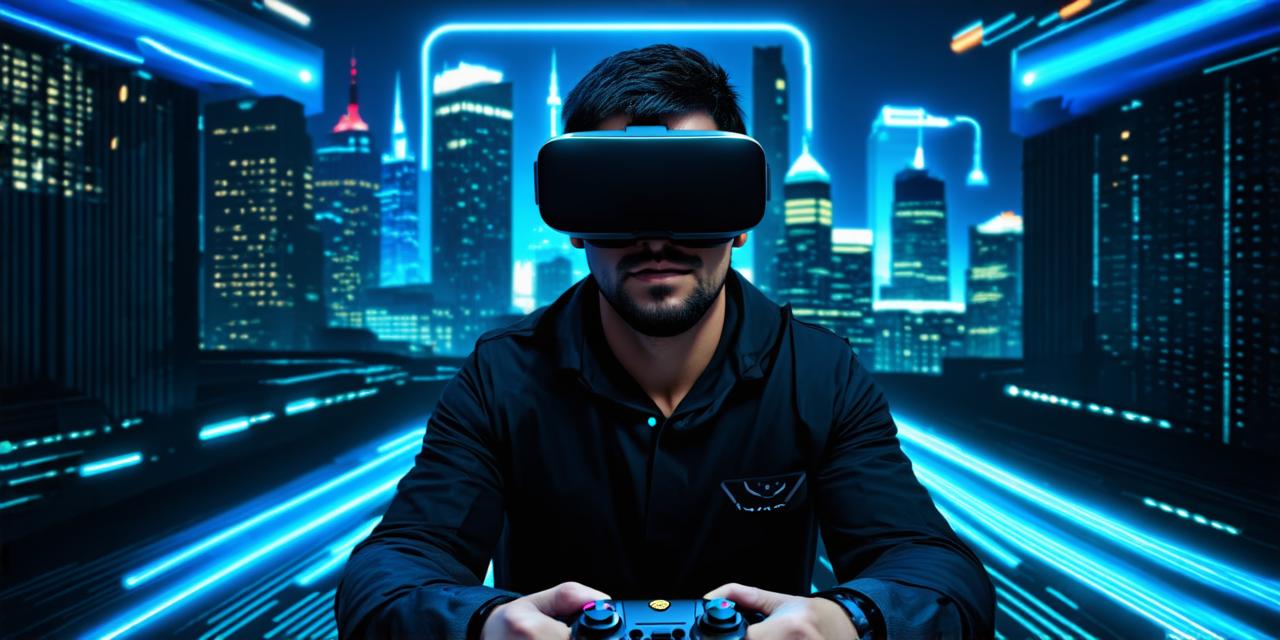Virtual reality (VR) technology has come a long way since its inception, and virtual reality goggles have become an essential tool for augmented reality (AR) developers. VR goggles enable users to immerse themselves in a digital environment, providing a realistic and interactive experience that can be used for a variety of applications, including gaming, education, and training.
The Anatomy of Virtual Reality Goggles
Virtual reality goggles consist of several components that work together to create a realistic and interactive experience for the user. These components include:
- Display screens: The display screens are the main component of the VR goggles. They provide the user with a 360-degree view of the digital environment. Typically, VR displays have a resolution of 1440 x 1600 pixels per eye, providing a clear and realistic image that allows the user to see everything in detail.
- Lenses: The lenses are designed to create an illusion of depth and perspective by focusing the light from each display screen onto the retina of each eye. This creates a sense of immersion and realism that allows the user to feel like they are actually in the digital environment.
- Head-tracking sensors: The head-tracking sensors are used to track the movement of the user’s head. They use infrared technology to detect the position of the head, allowing the VR goggles to adjust the image that is displayed to the user. This ensures that the user always sees the correct perspective and that they can look around freely without any distortion or discomfort.
- Motion controllers: The motion controllers are used to track the movements of the user’s hands and fingers. They allow the user to interact with virtual objects in the digital environment, providing a more immersive and realistic experience.
- Audio system: The audio system is designed to provide the user with a fully immersive experience by simulating the sounds that they would hear in the real world. This includes ambient noise, footsteps, and other environmental sounds that help to create a sense of realism and presence.
How Virtual Reality Goggles Function
The virtual reality goggles function by presenting the user with a 360-degree view of the digital environment. The display screens are positioned at a distance from the user’s eyes, and the lenses focus the light from each display screen onto the retina of each eye. This creates an illusion of depth and perspective that allows the user to see everything in detail.
The head-tracking sensors are used to track the movement of the user’s head. They use infrared technology to detect the position of the head, allowing the VR goggles to adjust the image that is displayed to the user. This ensures that the user always sees the correct perspective and that they can look around freely without any distortion or discomfort.
The motion controllers are used to track the movements of the user’s hands and fingers. They allow the user to interact with virtual objects in the digital environment, providing a more immersive and realistic experience. The audio system is designed to provide the user with a fully immersive experience by simulating the sounds that they would hear in the real world.

Case Studies: Virtual Reality Goggles in Action
One example of the power of virtual reality goggles is the use of VR technology in the medical industry. Virtual reality goggles are being used to provide doctors and patients with a more immersive and realistic experience during surgeries and other medical procedures. By wearing VR goggles, patients can be transported into a digital environment that replicates the surgical procedure they will undergo, allowing them to understand the process better and reduce their anxiety levels.
Another example is the use of virtual reality goggles in the real estate industry. Virtual reality goggles are being used to provide potential buyers with a more immersive and realistic view of properties that they are interested in. By wearing VR goggles, buyers can take a virtual tour of the property and see it from every angle, giving them a better understanding of the space and helping them make an informed decision about whether or not to purchase it.
Personal Experiences: Virtual Reality Goggles in My Life
As an AR developer, I have had the opportunity to work with virtual reality goggles on several occasions. One of my favorite experiences was using VR technology to create a virtual tour of a museum. By wearing VR goggles, users could take a virtual tour of the museum and see all of the exhibits as if they were actually there. This provided users with an immersive and interactive experience that allowed them to learn more about the history and culture of the time period represented in the museum.
Another memorable experience was using VR technology to create a virtual training program for a client’s employees. By wearing VR goggles, trainees could simulate real-world scenarios, such as customer service interactions or emergency response situations. This allowed them to practice their skills in a safe and controlled environment, providing them with the confidence they needed to perform their jobs effectively.
FAQs: Frequently Asked Questions about Virtual Reality Goggles
1. What are virtual reality goggles?
Virtual reality goggles are a device that allows users to experience a digital environment in a way that feels like they are physically present in that environment. VR goggles consist of several components, including display screens, lenses, head-tracking sensors, motion controllers, and an audio system.
2. How do virtual reality goggles work?
Virtual reality goggles work by presenting the user with a 360-degree view of the digital environment. The display screens are positioned at a distance from the user’s eyes, and the lenses focus the light from each display screen onto the retina of each eye. This creates an illusion of depth and perspective that allows the user to see everything in detail.
3. What are some common applications of virtual reality goggles?
Virtual reality goggles can be used for a variety of applications, including gaming, education, and training. In the gaming industry, VR goggles have become increasingly popular, providing users with a more immersive and realistic gaming experience. In education, virtual reality goggles are being used to provide students with a more interactive and engaging learning experience. In training, virtual reality goggles are being used to simulate real-world scenarios, allowing trainees to practice their skills in a safe and controlled environment.
4. Can virtual reality goggles be used for medical procedures?
Yes, virtual reality goggles can be used during surgeries and other medical procedures to provide patients with a more immersive and realistic experience. By wearing VR goggles, patients can understand the process better and reduce their anxiety levels.
5. Can virtual reality goggles be used for real estate?
Yes, virtual reality goggles can be used to provide potential buyers with a more immersive and realistic view of properties that they are interested in. By wearing VR goggles, buyers can take a virtual tour of the property and see it from every angle, giving them a better understanding of the space and helping them make an informed decision about whether or not to purchase it.
Summary: The Power of Virtual Reality Goggles
Virtual reality goggles have become increasingly popular in recent years, and their applications continue to grow. From gaming to education and training, virtual reality goggles provide users with a more immersive and realistic experience that can help them better understand complex concepts and perform their jobs effectively. As an AR developer, I am excited to see how virtual reality technology continues to evolve and how it will be used in the future.




